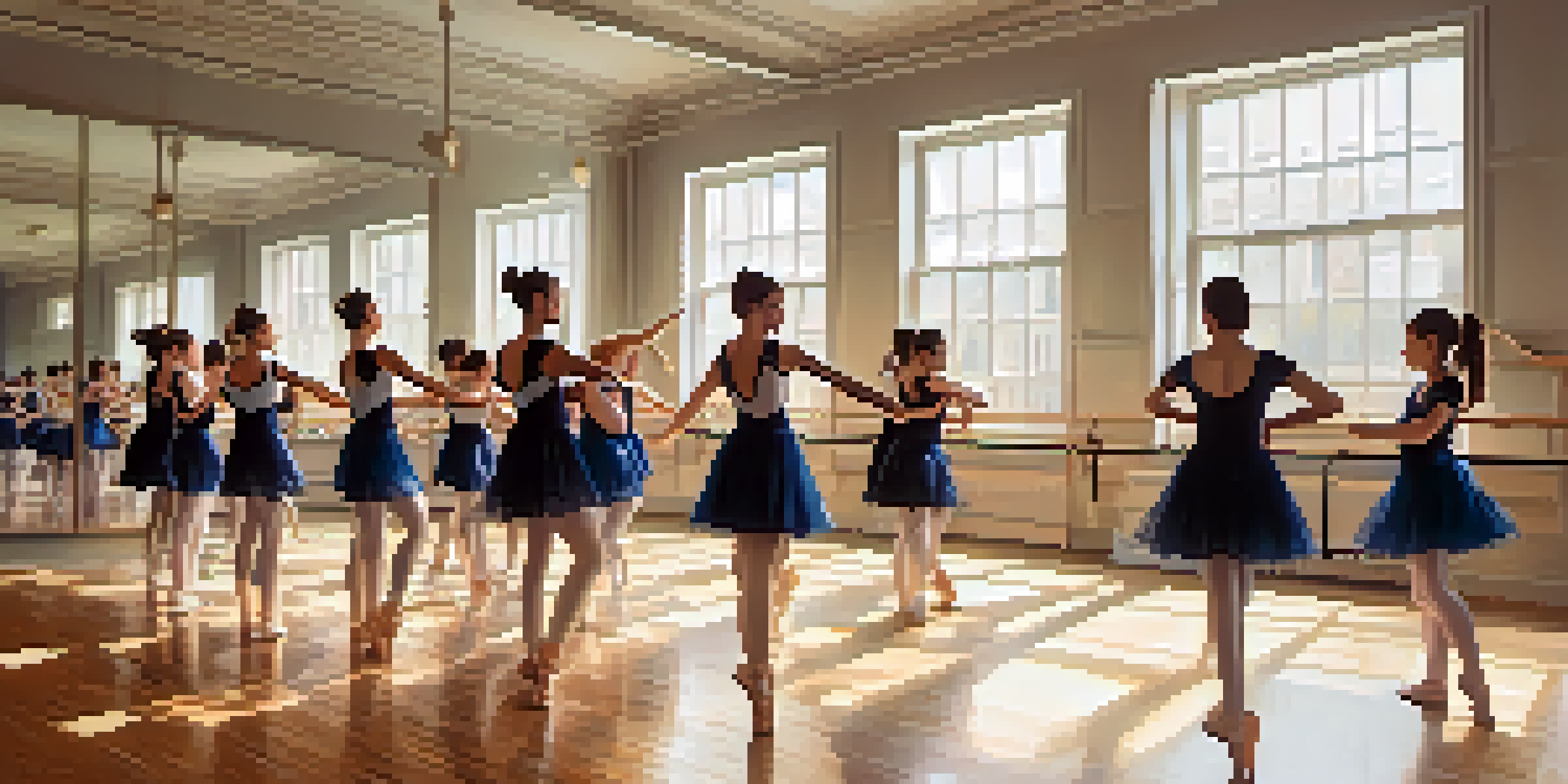Educational Applications of Dance Notation in Dance Programs

Understanding Dance Notation and Its Importance
Dance notation is a system of symbols that captures movement on paper, much like musical notation does for music. This method allows dancers and choreographers to document and share their work effectively. By using dance notation, educators can preserve choreography, ensuring it can be taught and performed accurately over time.
Enhancing Learning Through Structured Movement
Incorporating dance notation into educational programs provides students with a structured approach to learning choreography. It breaks down complex movements into manageable parts, making it easier for students to understand and retain what they learn. This structured method fosters a stronger foundation in dance technique and enhances overall performance.
Dance Notation as a Learning Tool
Dance notation simplifies complex movements, making choreography easier to learn and retain.
Facilitating Communication Among Dancers
Dance notation serves as a universal language that transcends cultural and linguistic barriers. When dancers from diverse backgrounds collaborate, notation allows them to communicate their ideas and movements effectively. This shared understanding enriches the creative process and encourages collaboration in dance education.
Supporting Choreography Creation and Analysis
For aspiring choreographers, dance notation offers a powerful tool for creating and analyzing their work. By notating their choreography, they can refine their movements and explore different interpretations. This process not only deepens their understanding of movement but also enhances their creativity and innovation.
Enhancing Collaboration in Dance
It provides a universal language for dancers from diverse backgrounds to communicate and collaborate effectively.
Encouraging Critical Thinking and Interpretation
Using dance notation encourages students to think critically about movement and its expression. As they learn to read and interpret notated dances, they develop a deeper appreciation for the art form. This analytical approach cultivates their ability to make informed artistic decisions in their own performances.
Integrating Technology with Dance Notation
The integration of technology has transformed how dance notation is taught and utilized. Software programs and apps now offer interactive ways for students to engage with notation, making it more accessible and enjoyable. This tech-savvy approach not only captivates students' interest but also prepares them for modern dance practices.
Skills Beyond the Dance Studio
Learning dance notation cultivates valuable life skills like discipline, teamwork, and critical thinking.
Promoting Lifelong Skills Through Dance Education
Learning dance notation equips students with valuable skills that extend beyond the dance studio. Skills such as discipline, attention to detail, and teamwork are all fostered through the practice of notating dance. These attributes serve them well in various aspects of life, promoting a well-rounded education.
The Future of Dance Notation in Education
As dance education continues to evolve, the role of dance notation will likely expand further. Innovative teaching methods and digital advancements will shape how notation is integrated into curricula. By embracing these changes, educators can ensure that dance notation remains a vital part of dance education for generations to come.